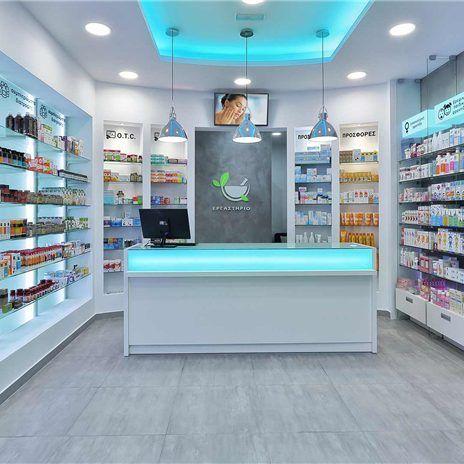If you are considering a career in interior design, chances are good that you will end up working for an interior design firm. How do you get started with that? What’s a good way to find opportunities? I’ll answer these questions and many more by taking you through the process of finding employment. How to get samples as an interior designer.
It is always challenging to design a large commercial project. But small businesses that are no more than a dozen cubicles or so can be among the most difficult. Interior design for shop Owners will view glass specialists as hired furniture movers with no formal education in retail design. In fact, when you get a call from a new client inquiring about your retail design services, they’ll probably want to know one thing: how much will it cost? and how to design a retail store interior.

Glass interior design for shop
Most vendors will provide samples for you to use in your design. These samples are usually small pieces of fabric or paper that allow you to test it in the space before committing to buying a large quantity. Ask your vendor if they have any sample pieces available, so you can see what the colors look like in person and feel how they hold up. If they don’t have any, ask them if they can provide larger samples or at least a swatch book so you can see what colors are available. You can also search online for sample books, but be aware that these aren’t always accurate representations of real life colors.
how to design a retail store interior
Retail stores need careful planning when it comes to interior design. The layout is important — especially if it’s a large space with multiple rooms — because it affects how customers move through the store and where they end up spending their money. You want your target audience (i.e., high-end customers) to associate good feelings with your brand, so make sure that every detail from lighting to paint color matches with this vision.

The first step in designing your retail store is to get some samples. While getting samples is easy, finding the right samples can be difficult. However, with a little research and patience, you can find the perfect samples for your store.
Step 1: Start With Your Budget
Before you start shopping for samples, it’s important to know how much money you have available for decorating your store. You should also decide whether you want to work with local distributors or order directly from manufacturers. Smaller distributors may have a wider selection of products but will also charge more than larger ones. If you’re ordering directly from manufacturers, you’ll need to make sure that they offer free shipping and return policies before placing an order.
Step 2: Decide What Type of Store You Want
Once you know what type of store you want and how much money you want to spend on decorating it, it’s time to start thinking about what kind of look and feel will work best for your business. For example, if your business sells high-end clothing or jewelry, then modern designs will probably suit it best. On the other hand, if your business sells home goods like furniture or appliances, then rustic designs
As an interior designer, you’ll need samples of fabrics, wall coverings and other materials to help clients visualize their ideas. But getting samples can be a challenge because of their expense and limited availability. Here are some tips for getting the best samples for your design projects:

Be prepared. Before you call or email the manufacturer, make sure you have all the information about the product you want to sample. This includes its name, style number, color name and numbers, thickness and widths. If it’s an unusual material such as leather, make sure you know how it was tanned and finished so that you can match it exactly with another supplier if necessary. Also ask about freight charges — some companies will send samples free or at cost; others will charge full freight to cover shipping costs from their warehouse to your office.

Find out if they have samples in stock. Some manufacturers keep small quantities of samples in stock (usually 50 yards or less) while others don’t offer any at all unless you order large quantities (1 yard or more). If your project is urgent and there are no samples available in stock but there is an item on display in a showroom nearby, ask if they will allow you to take photos or borrow a sample piece so that
If you are planning to open a retail store, you will need to consider a lot of things. One of these is the interior design. Here are some tips on how to design a retail store interior that can help you create an atmosphere that will attract customers and make them want to spend their money in your store.
1) First, choose your theme. You can choose any theme; it could be modern or vintage, whatever works for your business. Make sure that you choose something that has never been done before so that people can easily remember it. Avoid using too many colors in one area as this will just confuse your customers and make them feel uncomfortable.
2) Make sure that all the items in your store match each other perfectly so that there is no mismatch between them which might confuse customers and drive them away from your shop. If you want to use different styles then use different patterns instead of different colors so that they do not clash with each other.
3) Do not forget about lighting! Lighting plays an important role when it comes to interior designing because it gives the entire store a classy look which attracts more customers than anything else would do! Choose lights with warm shades such as yellow or orange
The first step in designing a retail store interior is to understand the client. Who is your customer? What do they like? What do they want?
What is their lifestyle, what do they value?
Once you can answer these questions, you can start to design the perfect store that will appeal to your customers and make them want to come back again and again.
The next step is to think about how you are going to position your brand within this store. You need to think about how you want your products displayed, where they will be placed, and how they will be displayed.
Make sure that the layout of your store makes sense for both customers and employees. It should be easy for customers to find items that interest them, but it should also be easy for employees so that they can stock shelves when needed and keep things tidy at all times.
When designing a retail store interior, always keep in mind who will be using it most often: shoppers or employees? The answer will help determine what type of lighting needs to be installed as well as whether or not there should be any sort of signage directing people through different parts of the store (i.e., “This way if you’re looking for earrings!”).
retail store interior design is the art of creating a space that not only attracts customers, but also sells products. It’s a delicate balance between aesthetics and functionality.
The sample-shopping process can be tedious if you don’t know where to start or what to look for. Here are some tips on how to get samples as an interior designer:
1) Know Your Client’s Budget
2) Find Designers Who Have Experience With Your Client’s Project Scope
3) Consider When You Need To Order Samples
4) Understand How Your Client Buys Design Services
5) Seek Out The Right Retail Partners
If you’re an interior designer, you know how important it is to get samples. If you’re not an interior designer, you may not know how difficult (and expensive!) it can be. Here are a few tips for getting samples for your retail store design.
1. Get samples from manufacturers
2. Get samples from wholesalers
3. Go directly to the source: Designers and manufacturers
4. Look on eBay
5. Ask your friends and family
If you’re an interior designer, you’ll need to get samples of all the materials you plan to use in your project. Some manufacturers have sample books that show all the colors and finishes they offer. If not, they may be able to send a sample or two to you.
If the manufacturer doesn’t have a sample book, you can ask them for some swatches or samples of their products. After all, if they’re confident enough that their product will look good in your space, they should be willing to send it to you so that you can see it in person.
If it’s too late for this step and there’s no way around it, then simply go with what you’ve got!
Retail store interior design is a broad topic that can encompass everything from the store entrance, to the displays and signage, to the overall theme and mood.
Here are some tips to keep in mind when designing a retail store interior:
Research the brand and its competitors. This step may seem obvious, but it’s important. You need to know who you’re designing for, what they want and what they expect from your brand.
Define your target customer. Once you’ve done your research on competitors, it’s time to determine your target customer profile. For instance, if your target customers are young urban professionals (YUPs), then you might want to design an open layout with lots of natural light and no clutter — so they can easily navigate around the store with ease. But if your target customers are older people who like shopping at home or while watching television, then you might want to consider a more traditional layout with plenty of natural light and plenty of space between racks so customers have plenty of room to browse comfortably without bumping into each other all the time.
Consider aesthetics. One of the most important considerations when designing retail stores is aesthetics: How will it look? How will it feel? What kind of emotions
Here are some tips for designing a retail store interior:
1. Pay attention to the flow of the store.
2. Identify your target market and make sure you have their needs in mind.
3. Determine how much space you need and how much you can afford in terms of rent and other expenses.
4. Make sure your store reflects the image that you want to project to customers.
5. Think about how people will move through the store and what they will see as they walk around it, especially at eye level where most people look first when entering a room or passing by an item on display.
